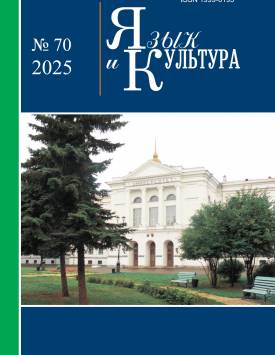Artificial intelligence tools in content and language integrated learning of law students
The selection of subject-thematic content and the development of teaching technology of foreign language and specialized discipline/specialty are the key issues of course development in the conditions of realization of content and language integrated learning. Artificial intelligence technologies and the tools created on their basis can help the teacher of an integrated course in the development of teaching content and foreign language tasks of a professional orientation. Law is one of the most demanded areas of study in Russian universities, which is chosen by a large number of students with a foreign language proficiency level of B1-B2. This level of formation of foreign language communicative competence allows them to master integrated courses within the framework of the main professional educational program, which include the dual purpose of training: a) the formation of professional foreign language communicative competence; b) the formation of professional competencies. At the same time, the main difficulty of teachers of integrated courses, most of whom have a basic linguistic education, is to develop the subject-thematic content of the course and to compile foreign-language professional tasks and cases aimed at the simultaneous and further formation of foreign-language communicative and professional competences. In this paper, the authors present a list of general professional and specialized disciplines, the content of which can constitute the content of an integrated course, as well as artificial intelligence tools, based on which students will be able to solve professional tasks in a foreign language in accordance with the chosen profile of study (civil law, criminal law and state law). The general professional block of disciplines studied by law students includes theory and history of state and law, constitutional, international, criminal and civil law, as well as legal technology. The main focus is on developing skills in working with legal documents, analyzing court decisions and preparing legal texts. To solve professional and educational tasks, it is proposed to use modern artificial intelligence tools such as ChatGPT, Doczilla AI, Mistral AI, Canva. Depending on the chosen specialization, students study specialized disciplines and apply appropriate AI tools. Students of the state law specialization can use ROSS Intelligence, LexisNexis and CaseText (CoCounsel) to analyze legislation, search for precedents and compile documents. The criminal law specialization includes in-depth study of criminal procedure, criminology, prosecution and anti-corruption The WestLaw web application can be used to search for precedents and analyze changes in criminal law. Civil law students study civil law, the legal foundations of intellectual property, damages and the reception of Roman law. AI tools such as TrademarkVision and LegalAI assist in analyzing licensing agreements, searching trademarks, and comparing legal rules. Students and teachers can use YandexGPT, Gi-gaChat, Genie AI Legalese Decoder, etc. to perform tasks related to the preparation and completion of familiarization, industrial and pre-graduation practice. The use of these artificial intelligence tools will allow law students to deepen their knowledge in the professional sphere and form foreign language communicative and professional competencies. The authors declare no conflicts of interests.
Keywords
artificial intelligence chatbots, neural networks, content and language integrated learning, English for lawyersAuthors
| Name | Organization | |
| Sysoyev Pavel V. | Derzhavin Tambov State University; Moscow Pedagogical State University | psysoyev@yandex.ru |
| Bulochnikov Stanislav Yu. | Derzhavin Tambov State University | bulochnikov03@mail.ru |
| Sorokin Danila O. | Derzhavin Tambov State University | sorokindanila2002@gmail.com |
References

Artificial intelligence tools in content and language integrated learning of law students | Yazyk i Kultura – Language and Culture. 2025. № 70. DOI: 10.17223/19996195/70/12
